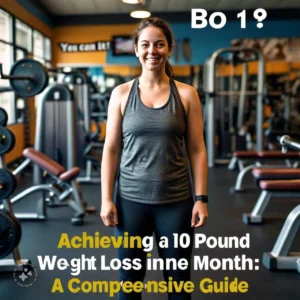Are you looking to build strength, improve your fitness, or enhance athletic performance? Look no further! In this informative guide, we will explore the 10 best types of strength training exercises.
From bodyweight training to plyometrics, we’ll delve into what each type entails, who it’s best for, and provide pro tips to help you get the most out of your workouts.


What is Strength Training?
Strength training refers to exercises that focus on increasing muscular strength, endurance, and overall power.
It typically involves using resistance, such as weights or resistance bands, to challenge and stimulate the muscles.
By regularly engaging in strength training, you can improve muscle tone, bone density, and functional strength for everyday activities.
10 Types of Strength Training: Chose which best for you
Ready to supercharge your fitness routine? Discover the ten best types of strength training that can help you achieve your goals and choose the one that suits you best!
The ten types of strength training are:
1. Bodyweight Training
2. Weightlifting
3. Resistance Band Training
4. Functional Training
5. Circuit Training
6. Plyometric Training
7. Isometric Training
8. High-Intensity Interval Training (HIIT)
9. CrossFit
10. Pilates
1. Bodyweight Training
What it is: Bodyweight training utilizes your own body weight as resistance for exercises like push-ups, squats, and planks. It’s a versatile form of strength training that can be done anywhere without equipment.
Best for: Beginners, those without access to equipment, or individuals aiming to improve overall strength, endurance, and bodyweight control.
Pro tips: Focus on proper form, gradually increase repetitions or difficulty, and incorporate variations like lunges or burpees. Challenge yourself, but listen to your body and rest when needed.


2. Weightlifting
What it is: Weightlifting involves using external weights, such as dumbbells or barbells, for exercises like bench presses, deadlifts, and squats. It targets specific muscle groups to build strength, power, and muscle mass.
Best for: Individuals looking to increase muscle mass, improve strength, and enhance athletic performance.
Pro tips: Begin with lighter weights to master proper technique, gradually increase weight as you progress, and maintain a balanced routine targeting different muscle groups. Focus on proper breathing and posture during exercises.


3. Resistance Band Training
What it is: Resistance band training utilizes elastic bands to provide resistance during exercises, engaging muscles and improving strength.
Best for: People of all fitness levels, including those recovering from injuries, as resistance bands offer adjustable tension and lower joint impact.
Pro tips: Choose bands with suitable resistance for your fitness level, maintain control throughout each exercise, and focus on both pulling and pushing movements to target different muscle groups. Experiment with various band positions and angles to add variety.


4. Functional Training
What it is: Functional training focuses on movements that simulate everyday activities and improve overall strength, balance, coordination, and mobility.
Best for: Enhancing everyday functionality, sports performance, and injury prevention.
Pro tips: Incorporate multi-joint exercises that engage multiple muscle groups simultaneously, utilize unstable surfaces or equipment like stability balls to challenge balance and core stability, and prioritize movement quality and control over heavy weights.
5. Circuit Training
What it is: Circuit training involves performing a series of exercises targeting different muscle groups, with minimal rest between sets.
Best for: Time-efficient workouts that combine strength training and cardiovascular benefits.
Pro tips: Choose exercises that target different muscle groups to ensure a balanced workout, maintain proper form throughout each exercise, adjust intensity based on your fitness level, and gradually increase the challenge by adding weights or reducing rest time. Keep a brisk pace to maximize the cardiovascular benefits.
6. Plyometric Training
What it is: Plyometric training involves explosive movements, such as jumps and hops, to develop power, speed, and agility.
Best for: Athletes, individuals looking to improve their performance in sports that require quick, explosive movements.
Pro tips: Start with basic plyometric exercises, focus on proper landing techniques, gradually increase intensity and complexity, and allow ample recovery time between sessions to prevent overuse injuries.


7. Isometric Training
What it is: Isometric training involves holding static positions, such as planks or wall sits, to build strength and endurance in specific muscle groups.
Best for: Individuals looking to improve muscular endurance, joint stability, and overall strength without joint movement.
Pro tips: Engage the target muscles during isometric holds, maintain proper alignment and form, breathe steadily, and gradually increase the duration or difficulty of the exercises.
8. High-Intensity Interval Training (HIIT)
What it is: HIIT alternates between intense bursts of exercise and short recovery periods to improve cardiovascular fitness and burn calories.
Best for: Those seeking a time-efficient workout that combines strength and cardiovascular training, and individuals looking to improve overall fitness and burn fat.
Pro tips: Choose exercises that target different muscle groups, perform each exercise with maximum effort during the intense intervals, and allow enough recovery time to maintain proper form throughout the workout.
9. CrossFit
What it is: CrossFit is a high-intensity, functional fitness program that combines various exercises, including weightlifting, bodyweight movements, and cardio, in a structured and intense format.
Best for: Those looking for a challenging, all-around workout that improves strength, endurance, agility, and overall fitness.
Pro tips: Find a certified CrossFit coach or join a reputable CrossFit gym to ensure proper coaching and guidance, focus on technique and form, and gradually increase intensity while listening to your body’s limits.
10. Pilates
What it is: Pilates is a low-impact exercise method that focuses on core strength, flexibility, and overall body control through precise movements and breathing techniques.
Best for: Individuals looking to improve core strength, posture, flexibility, and body awareness.
Pro tips: Practice proper breathing techniques, focus on alignment and control during each movement, start with beginner-level exercises, and gradually progress to more advanced movements as you build strength and control.
Conclusion
In conclusion, incorporating strength training into your fitness routine offers numerous benefits. Whether you prefer bodyweight exercises, weightlifting, or functional training, there’s a type that suits your needs.
Remember to choose the one that aligns with your goals and fitness level, focus on proper form, and gradually progress to challenge yourself.
With these 10 best types of strength training exercises, you’ll be on your way to a stronger, fitter, and more resilient you. Start your strength training journey today!
Read More
- Cable Chest Exercises: What it Is, Workout, Best Variations
- Lower Chest Cable Fly: How to Do, Benefits, Variations, Workout Plan
- How to do Toe Touches-Warm Up and Exercises
FAQ’s
Get answers to your frequently asked questions (FAQs) in this informative guide. Clear up any doubts and gain valuable insights!
Ques1- What are the 6 types of strength training?
The six types of strength training include bodyweight training, weightlifting, resistance band training, functional training, circuit training, and plyometric training.
Ques2- What are the four types of strength training?
The four types of strength training are bodyweight training, weightlifting, resistance band training, and functional training.
Ques3- Are there different types of strength training?
Yes, there are different types of strength training, including bodyweight training, weightlifting, resistance band training, functional training, circuit training, and plyometric training.
Ques4- What are the 3 types of strengths?
The three types of strengths are physical strength, mental strength, and emotional strength. Each plays a vital role in our overall well-being and resilience.





